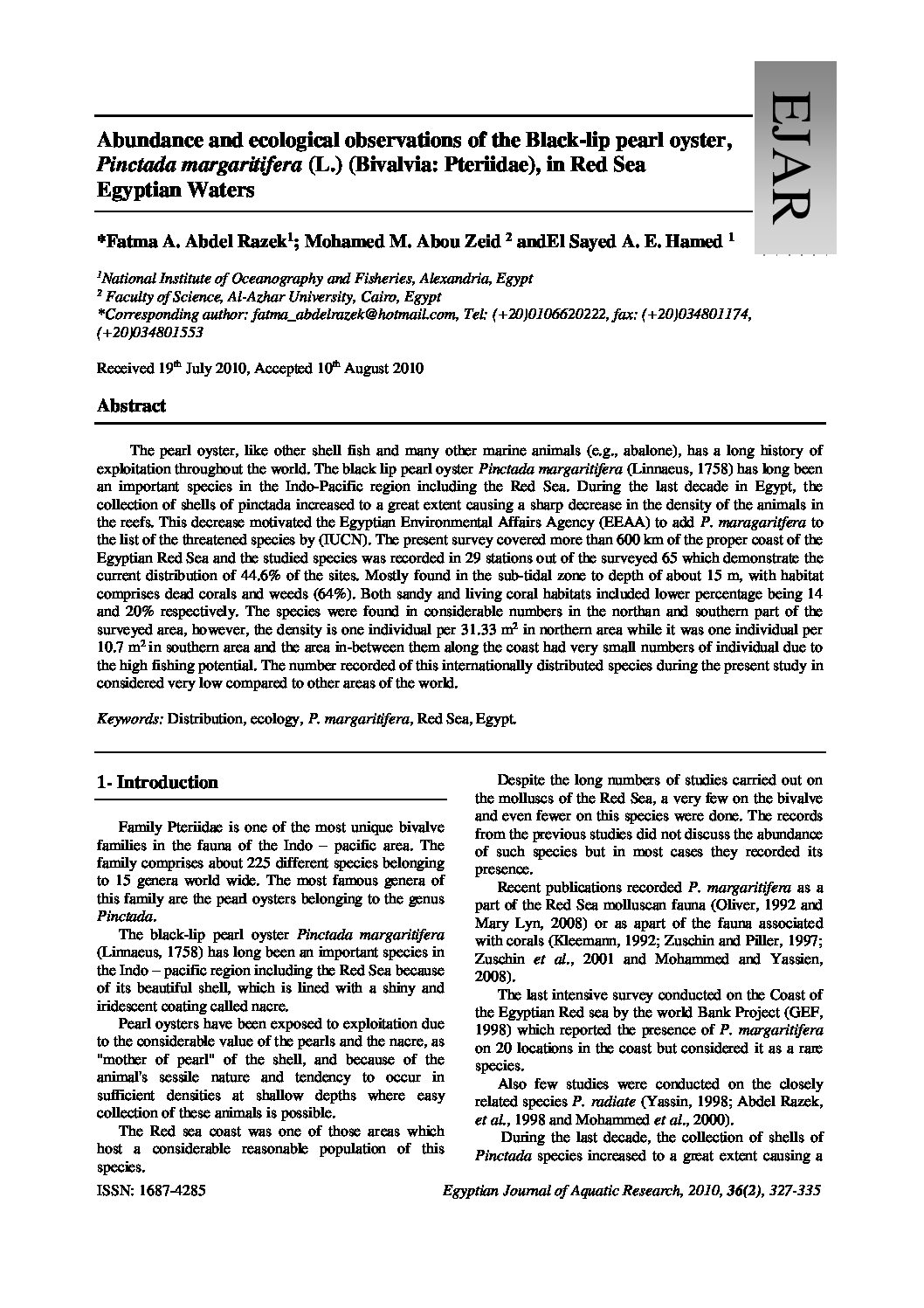Categories
vol-36Antimicrobial characteristics of marine polychaetes collected from
Alexandria beaches
Hassan A.H. Ibrahim1 and Faiza Abd-Elnaby2
1Microbiology laboratory, National Institute of Oceanography and Fisheries, Kayet Bay,
Alexandria, Egypt;
2 National Institute of Oceanography and Fisheries,Taxonomy of marine organisms laboratory, Kayet Bay,
Alexandria, Egypt
E-mail: [email protected] & E-mail: [email protected]
Received 3
rd August 2010, Accepted 4
th November 2010
Abstract
Five marine polychaete species isolated from seawater, Alexandria, Egypt, were taxonomically identified and
then investigated as a source of natural products which can be used as antibacterial and antifungal of human and fish
pathogens. Three of these species were from family Nerididae; genus Nereis (Nereis falsa), genus Perinereis
(Perinereis nuntia typica) and genus Pseudonereis (Pseudonereis anomala); one species from family Oenonidae;
genus Halla A. (Halla parthenopeia), and finally one species was from family Serpulidae; genus Hydroides
(Hydroides elegans). Ethanol crude extracts of the current marine worms were tested against different bacterial and
fungal pathogens. Positive significant results were detected with Halla parthenopeia and Hydroides elegans. The
crude extract of H. elegans had abroad spectrum antimicrobial effect against different bacterial pathogens. Activity
units ranged from 6.4 for B. cereus to 15.5 for P. aureginosa. Moreover, H. elegans extracts had the most
suppression percentage against pathogenic fungi expressed in diameter. Suppression percentage ranged from 40 to
100% against A. niger and R. solani, respectively. As well as, suppression percentages of crude extracts against
fungi, represented by dry weight, ranged from 15.66 to 96.9% for H. elegans crude extract and from zero to 90.10%
for H. parthenopeia crude extract. The gas liquid chromatography mass spectrometer of H. parthenopeia and H.
elegans extracts was determined and the main constituents detected were organic acids and their derivatives.
Keywords: Marine worms, Polychaetes; Marine bioactive substances; Dodecane; Cholesterol; Hexadecanoic acid







